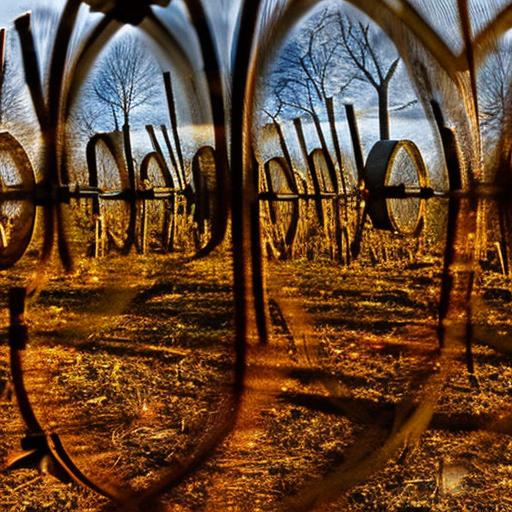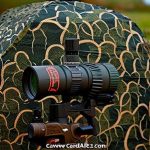Your cart is currently empty!

dove hunting blinds

Dove hunting blinds are structures or devices used by hunters to conceal themselves while hunting doves. These blinds are essential for a successful hunt as they provide hunters with a hidden vantage point, allowing them to observe and shoot doves without being detected. By using a blind, hunters can increase their chances of a successful hunt by remaining hidden from the keen eyesight of doves.
The importance of using a blind for dove hunting cannot be overstated. Doves have excellent eyesight and can easily spot movement from a distance. By using a blind, hunters can effectively hide their movements and blend in with their surroundings, making it more difficult for doves to detect them. This increases the chances of getting within range for a successful shot.
Key Takeaways
- Dove hunting blinds are important for concealing hunters and providing a comfortable shooting position.
- There are various types of dove hunting blinds, including pop-up, layout, and tower blinds.
- When choosing a dove hunting blind, consider factors such as size, portability, and concealment capabilities.
- Proper placement and setup of your dove hunting blind can increase your chances of a successful hunt.
- Camouflage and concealment techniques can help you blend in with your surroundings and avoid detection by doves.
Types of Dove Hunting Blinds: A comprehensive guide to the different types available.
1. Ground blinds: Ground blinds are the most common type of dove hunting blinds. They are typically made of lightweight materials such as fabric or mesh and are designed to be set up on the ground. Ground blinds provide hunters with a low-profile hiding spot, allowing them to remain hidden while waiting for doves to fly by.
2. Tree stands: Tree stands are another type of dove hunting blind that is commonly used in areas with tall trees. These blinds are attached to trees and provide hunters with an elevated vantage point, allowing them to see over tall grass or vegetation. Tree stands can be particularly effective in areas where doves tend to fly at higher altitudes.
3. Portable blinds: Portable blinds are lightweight and easy to carry, making them ideal for hunters who need to move frequently or hunt in different locations. These blinds can be set up quickly and provide hunters with a concealed hiding spot wherever they go.
4. Layout blinds: Layout blinds are designed to be used in open fields or areas where there is little natural cover. These blinds are low-profile and allow hunters to lie flat on the ground, mimicking the appearance of a natural feature in the landscape. Layout blinds are particularly effective for hunters who prefer to shoot doves as they come into land.
Choosing the Right Dove Hunting Blind: Factors to consider when selecting a blind.
1. Location and terrain: The first factor to consider when choosing a dove hunting blind is the location and terrain where you will be hunting. Different blinds are better suited for different types of terrain. For example, ground blinds are ideal for hunting in areas with dense vegetation, while tree stands are better suited for hunting in areas with tall trees.
2. Hunting style and preferences: Your hunting style and preferences will also play a role in determining the type of blind that is best for you. If you prefer to hunt from an elevated position, then a tree stand may be the best option for you. If you prefer to hunt on the ground and move frequently, then a portable blind may be more suitable.
3. Budget: Finally, your budget will also be a factor in choosing a dove hunting blind. Blinds can range in price from affordable to quite expensive, depending on the features and materials used. It is important to set a budget and stick to it when selecting a blind.
Setting Up Your Dove Hunting Blind: Tips and tricks for optimal placement and setup.
1. Choosing the right location: The first step in setting up your dove hunting blind is choosing the right location. Look for areas where doves are known to frequent, such as feeding areas or watering holes. It is also important to consider factors such as wind direction and sun exposure when choosing a location.
2. Setting up the blind properly: Once you have chosen a location, it is important to set up the blind properly. Follow the manufacturer’s instructions for assembly and make sure that all parts are secure. It is also important to set up the blind in a way that provides you with a clear line of sight and shooting lanes.
3. Adjusting for wind and sun: Finally, it is important to adjust the blind for wind and sun conditions. Position the blind in a way that provides you with the best possible concealment from the direction of the wind. You may also need to adjust the blind throughout the day to avoid being silhouetted by the sun.
Camouflage and Concealment: How to effectively blend in with your surroundings.
1. Choosing the right camouflage pattern: One of the most important aspects of blending in with your surroundings is choosing the right camouflage pattern for your blind. Look for patterns that match the vegetation and terrain where you will be hunting. It is also important to consider the time of year, as vegetation and colors can change throughout the seasons.
2. Concealing the blind with natural materials: In addition to using camouflage patterns, it is also important to conceal the blind with natural materials such as branches, leaves, or grass. This will help to break up the outline of the blind and make it blend in more effectively with its surroundings.
3. Using decoys to attract doves: Another effective way to blend in with your surroundings is by using decoys to attract doves. Place decoys around your blind to create a realistic scene that will attract doves and make them feel more comfortable approaching your location.
Essential Gear for Dove Hunting: A list of must-have items for a successful hunt.
1. Shotgun and ammunition: The most important piece of gear for dove hunting is a shotgun and ammunition. Choose a shotgun that is appropriate for dove hunting, such as a 12 or 20 gauge, and make sure that you have enough ammunition for a successful hunt.
2. Binoculars: Binoculars are essential for spotting doves from a distance and identifying them before taking a shot. Look for lightweight and compact binoculars that are easy to carry and provide clear and sharp images.
3. Water and snacks: Dove hunting can be physically demanding, so it is important to stay hydrated and fueled throughout the day. Bring plenty of water and snacks to keep your energy levels up.
4. First aid kit: Accidents can happen while hunting, so it is important to have a first aid kit on hand. Make sure that your first aid kit is stocked with essentials such as bandages, antiseptic wipes, and pain relievers.
Safety Considerations: Ensuring a safe and responsible hunting experience.
1. Proper handling of firearms: Safety should always be the top priority when hunting. Make sure that you are familiar with the proper handling and operation of your firearm, and always follow the basic rules of firearm safety.
2. Hunting with a partner: It is always a good idea to hunt with a partner, especially when using a blind. Having a hunting partner can help ensure that you have someone to watch your back and can provide assistance in case of an emergency.
3. Knowing and following hunting regulations: Before heading out on a dove hunting trip, make sure that you are familiar with the hunting regulations in your area. This includes knowing the bag limits, season dates, and any specific rules or restrictions that may apply.
Hunting Etiquette: Guidelines for respectful and ethical hunting practices.
1. Respecting private property: Always obtain permission from landowners before hunting on private property. Treat the land with respect and leave it in the same or better condition than you found it.
2. Avoiding over-hunting: It is important to practice responsible hunting by not over-hunting an area or taking more doves than you can use or consume. This helps to ensure sustainable populations of doves for future generations.
3. Leaving the area better than you found it: As a responsible hunter, it is important to leave the area better than you found it. This means picking up any trash or litter, properly disposing of spent shotgun shells, and leaving the natural environment undisturbed.
Common Mistakes to Avoid: Pitfalls to watch out for when using a dove hunting blind.
1. Overusing a blind in one location: Doves can become wary of blinds if they are overused in one location. It is important to move your blind frequently to avoid spooking doves and to keep them guessing.
2. Not adjusting for changing weather conditions: Weather conditions can change quickly while hunting, so it is important to adjust your blind accordingly. This may include adjusting the position of the blind to avoid being silhouetted by the sun or moving the blind to a more sheltered location in case of rain or wind.
3. Not properly concealing the blind: Properly concealing the blind is essential for a successful hunt. Make sure that you are using the right camouflage pattern for your surroundings and that you are concealing the blind with natural materials.
Maintaining Your Dove Hunting Blind: Care and upkeep tips to extend the life of your equipment.
1. Cleaning and storing the blind properly: After each hunting trip, make sure to clean your blind thoroughly and store it in a dry and secure location. This will help prevent damage from moisture or pests and extend the life of your equipment.
2. Checking for wear and tear: Regularly inspect your blind for any signs of wear and tear, such as holes or tears in the fabric. Repair or replace any damaged parts as needed to ensure that your blind remains in good working condition.
3. Replacing damaged parts as needed: If any parts of your blind become damaged beyond repair, make sure to replace them promptly. This will help ensure that your blind continues to provide you with effective concealment and a comfortable hunting experience.
If you’re interested in dove hunting blinds, you might also find this article on “How to Catch a Groundhog with a Milk Jug” intriguing. It offers a unique approach to dealing with groundhog problems using a simple household item. Check it out for some innovative ideas!
FAQs
What is a dove hunting blind?
A dove hunting blind is a structure used by hunters to conceal themselves while hunting doves. It is designed to provide cover and camouflage to the hunter, making it easier to approach and shoot doves.
What are dove hunting blinds made of?
Dove hunting blinds can be made of various materials, including natural materials such as branches, leaves, and grass, or synthetic materials such as fabric, plastic, and metal. The choice of material depends on the hunter’s preference, the hunting location, and the weather conditions.
How do you set up a dove hunting blind?
To set up a dove hunting blind, you need to find a suitable location with good visibility and cover. Then, you can construct the blind using natural or synthetic materials, or use a pre-made blind. The blind should be positioned in a way that allows you to see approaching doves and shoot them safely.
Do you need a permit to use a dove hunting blind?
The regulations regarding the use of dove hunting blinds vary depending on the state or country where you are hunting. In some places, you may need a permit or license to use a hunting blind. It is important to check the local hunting regulations before setting up a blind.
What are the benefits of using a dove hunting blind?
Using a dove hunting blind can provide several benefits to hunters. It can help you stay concealed and avoid detection by doves, making it easier to get closer and shoot them. It can also provide protection from the elements, such as wind and rain, and make your hunting experience more comfortable.

Herb has been a longtime lover of the outdoors. Whether it be hunting, camping, fishing or just getting outside to reset. Proud father and animal lover. Bourbon anyone?

by
Tags:
Comments

Categories
- Big Game Hunting (301)
- Deer (202)
- Reviews (3)
- Shooting (16)
- Slingshot (1)
- Small Game Hunting (42)
- Upland Hunting (126)
- Waterfowl Hunting (3)





Leave a Reply